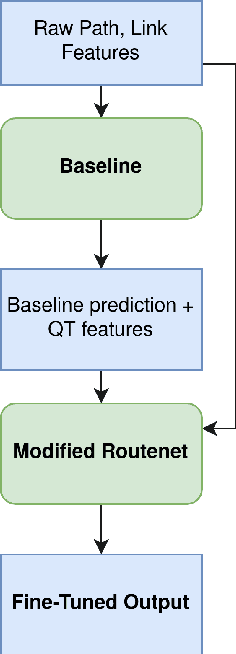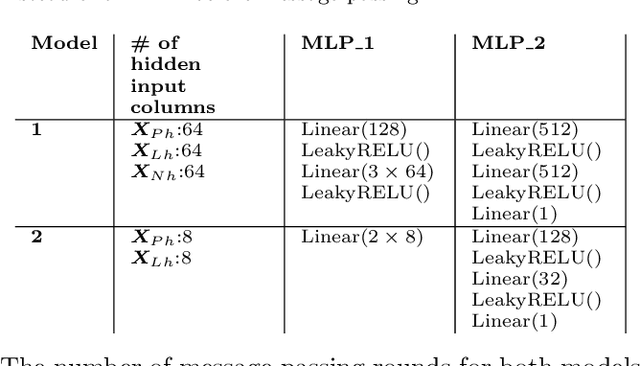QT-Routenet: Improved GNN generalization to larger 5G networks by fine-tuning predictions from queueing theory
Paper and Code
Jul 13, 2022



In order to promote the use of machine learning in 5G, the International Telecommunication Union (ITU) proposed in 2021 the second edition of the ITU AI/ML in 5G challenge, with over 1600 participants from 82 countries. This work details the second place solution overall, which is also the winning solution of the Graph Neural Networking Challenge 2021. We tackle the problem of generalization when applying a model to a 5G network that may have longer paths and larger link capacities than the ones observed in training. To achieve this, we propose to first extract robust features related to Queueing Theory (QT), and then fine-tune the analytical baseline prediction using a modification of the Routenet Graph Neural Network (GNN) model. The proposed solution generalizes much better than simply using Routenet, and manages to reduce the analytical baseline's 10.42 mean absolute percent error to 1.45 (1.27 with an ensemble). This suggests that making small changes to an approximate model that is known to be robust can be an effective way to improve accuracy without compromising generalization.
 Add to Chrome
Add to Chrome Add to Firefox
Add to Firefox Add to Edge
Add to Edge